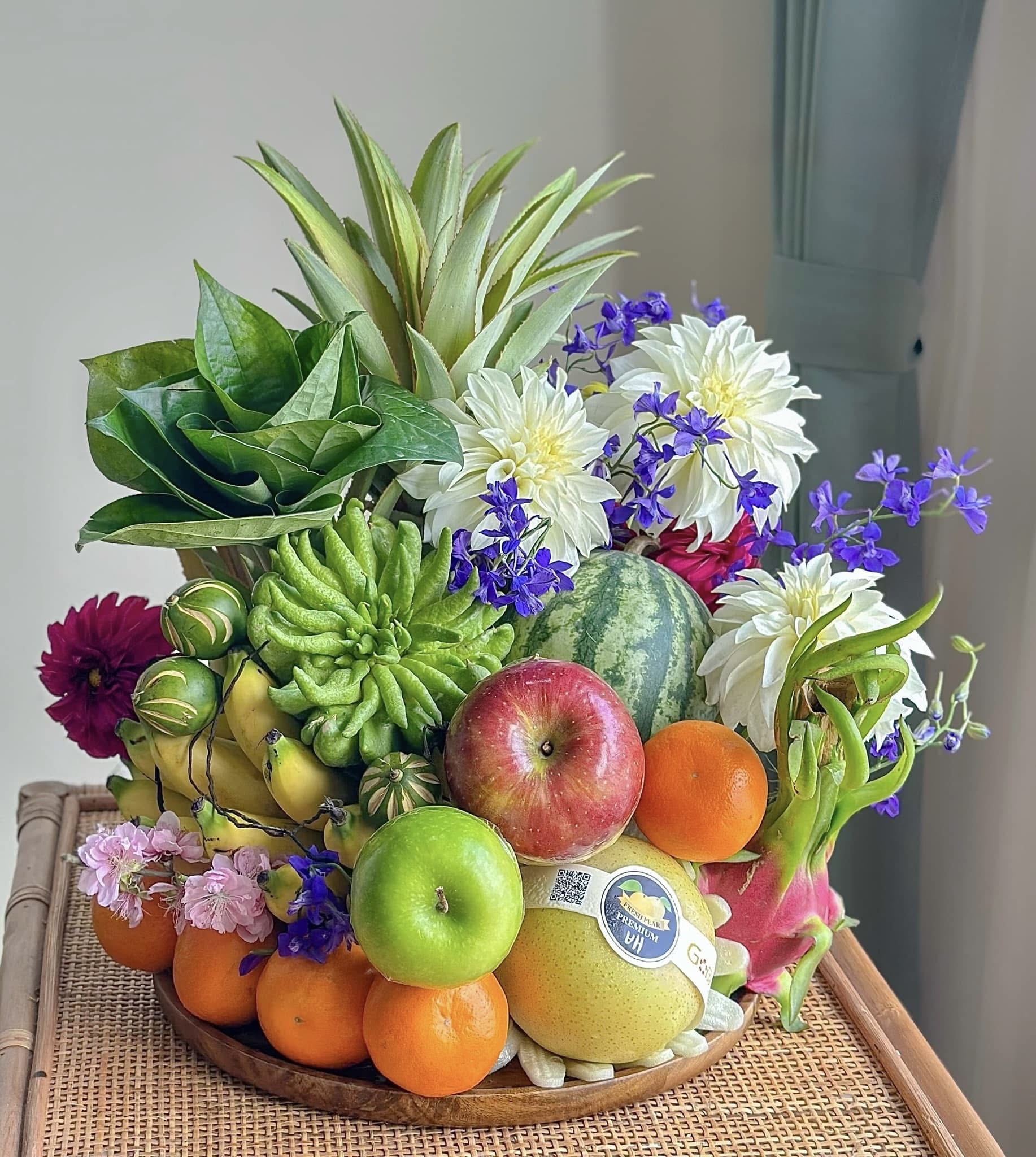This festive five-fruit tray symbolizes wishes for the new year—watermelon for luck, pineapple for wealth, bananas for unity, oranges for success, and apple for peace. Each fruit carries meaning, arranged with care to invite prosperity, harmony, and blessings for the family.
